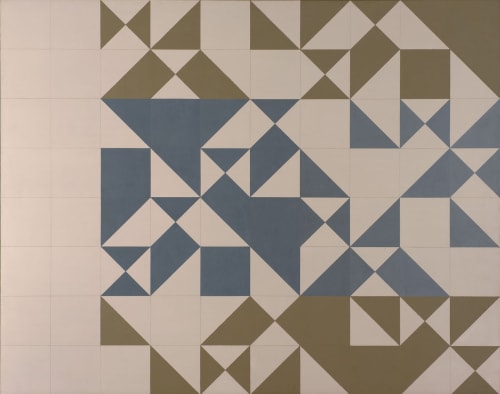John Ernest (1922 – 1994) was an American constructivist abstract artist. After a period of exploration and artistic development in Sweden and Paris from 1946 to 1951, Ernest settled in London, where he spent the majority of his life. It was during his time in London that he fully immersed himself in a vibrant artistic community, studying at Saint Martin's School of Art and coming under the influence of prominent figures such as Victor Pasmore and other proponents of constructivism.
In the 1950s, Ernest emerged as a key member of the British constructivist art movement, alongside contemporaries such as Anthony Hill, Kenneth Martin, Mary Martin, Stephen Gilbert, and Gillian Wise. His work during this period was characterised by a commitment to geometric abstraction and a meticulous exploration of form, space, and structure.
Ernest's artistic practice encompassed both reliefs and free-standing constructions, demonstrating his versatility and innovative spirit. Notable among his achievements is the design of a tower and a large wall relief exhibited at the International Union of Architects congress in South Bank in 1961. These works showcased the dynamism and creativity of the British constructivist movement.
Throughout his career, Ernest maintained a deep fascination with mathematics, which found expression in his art. Collaborating with fellow constructivist artist Anthony Hill, he made significant contributions to graph theory, particularly in the study of crossing numbers of complete graphs. This interdisciplinary approach underscored Ernest's commitment to pushing the boundaries of artistic exploration and intellectual inquiry.
